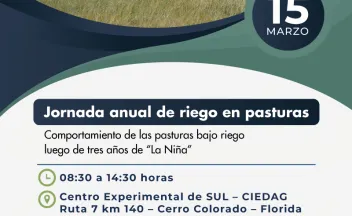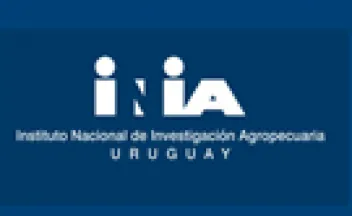
Instituto Nacional de Investigación Agropecuaria


ABSTRACT.- Metal nanoparticles are widely studied due to their various applications, such as their potential use in the control of phytopathogens and the promotion of plant growth, with a significant impact on agriculture. Various microbial metabolites are used to reduce and stabilize metals and metal oxides to the nanoscale. In the present work, the biological synthesis of silver and copper oxide nanoparticles using Trichoderma harzianum TA2 is reported.

ABSTRACT.- Metal nanoparticles are widely studied due to their various applications, such as their potential use in the control of phytopathogens and the promotion of plant growth, with a significant impact on agriculture. Various microbial metabolites are used to reduce and stabilize metals and metal oxides to the nanoscale. In the present work, the biological synthesis of silver and copper oxide nanoparticles using Trichoderma harzianum TA2 is reported.

ABSTRACT.- Insect cuticular lipids, especially epicuticular hydrocarbons (CHC), have a significant role in insect ecology and interactions with other organisms, including fungi. The CHC composition of a specific insect species may influence the outcome of the interaction with a specific fungal strain. Some insects, such as Piezodorus guildinii, have low susceptibility towards fungal infections seemingly due to their CHC composition. The entomopathogenic fungus Beauveria bassiana can assimilate CHC and incorporate them as building blocks via cytochrome P450 monooxygenases (CYPs).

The objective was to evaluate the relationship between P balance (P fertilization minus P removal in grain) on the evolution of soil P availability (P Bray I analysis).

The specific objective is to study the effect of previous P fertilization on P fixation according to soil type.

This study investigates the co-inoculation of soybeans with rhizobia and PMB Bacillus strains with and without addition of P fertilizer on plant P uptake and crop yield.

Several actions have been carried out in the Santa Lucia River basin (1.343.300 ha) in order to reduce the impact of anthropogenic pressure and improve water quality. Environmental models may be used as supportive tools when assessing the effect of local actions at a basin scale.

The aims of this study were to assess the long-term effects of different CPR on SOC stocks on the subsoil, and to draw conclusions about the capacity of CPR to sequester C in Uruguay.We conclude that incorporating pastures in continuous crop sequences increased soil organic carbon stocks through the soil profile by an average of 28%.

ABSTRACT.- Areas used for livestock production and dominated by native grasses represent a unique opportunity to reconcile biodiversity conservation and livestock production. However, limited knowledge of individual species' responses to rangeland management restricts our capacity to design grazing practices that favor endangered species and other priority birds.